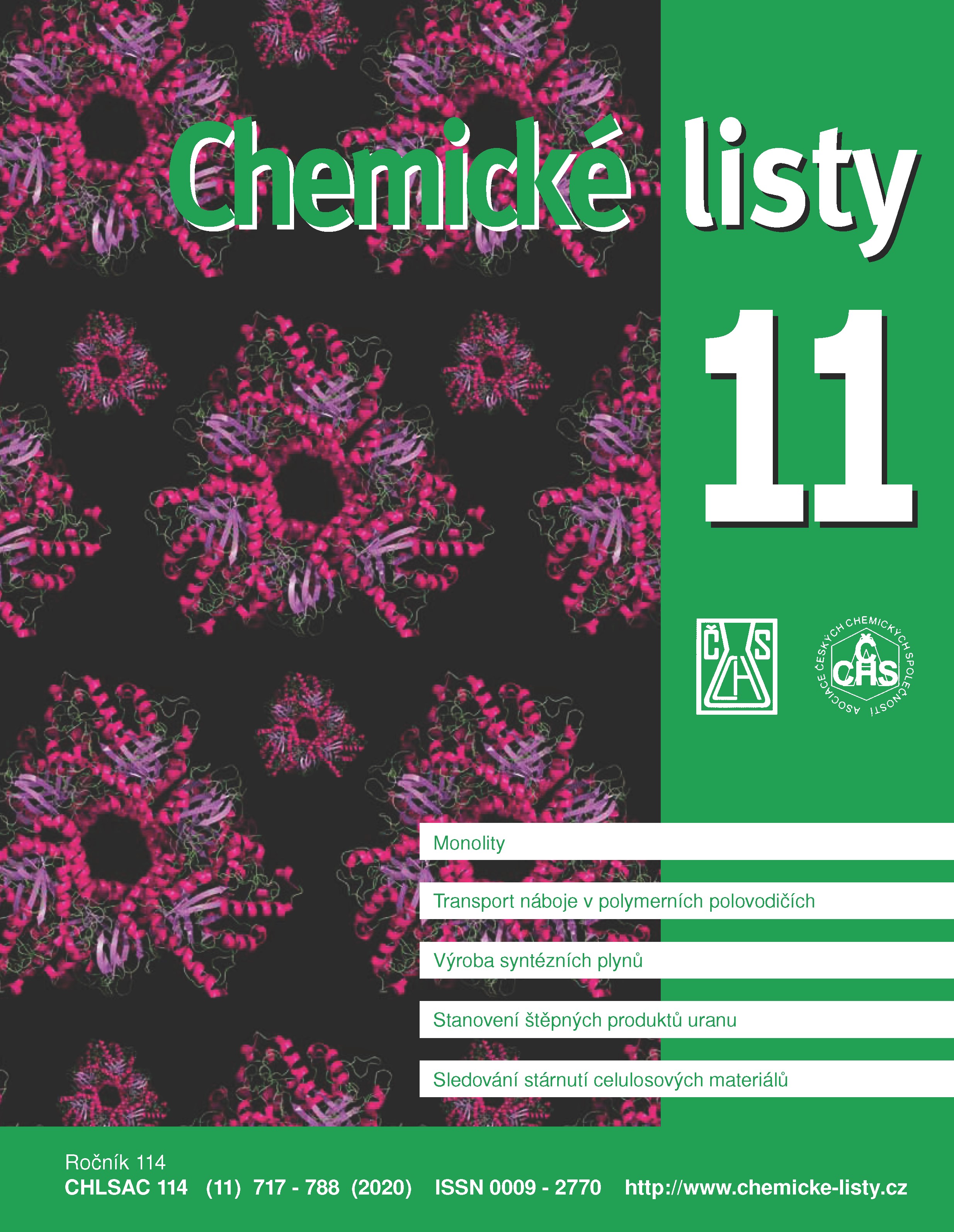Transport náboje v π-konjugovaných polymerních polovodičích
Klíčová slova:
polymerní polovodič, pohyblivost nosičů náboje, energetická neuspořádanost, valenční pás, přeskoky náboje, tranzistor řízený polemAbstrakt
The charge carrier transport in linear conjugated polymer semiconductors, used in printed organic electronics for construction of solar cells, light emitting diodes, transistors, sensors and other devices, significantly differs from the charge transport in inorganic materials. This article shows a possible theoretical approach to the modelling of the charge transport, which considers different nature of interactions present within the polymer chain and between chains in the amorphous and crystalline phases. The on-chain charge carrier states and distributions of molecular parameters influencing the transport are solved by means of the quantum chemical methods. Semi-classical description of the interchain charge hopping includes the charge carrier thermalization, complying with Pauli's exclusion principle. Numerical calculations, performed for poly(3-hexylthiophene-2,5-diyl), show that, depending on the value of the energetic and structural disorder, the charge mobility significantly increases with the charge concentration, which may be explained by trap filling. After the traps are completely filled, the effect of the disorder disappears and the mobility decreases due to the lower density of unoccupied states available for the hopping transport. This phenomenon is related to the experimentally observed mobility degradation in organic field-effect transistors at high gate voltage.





